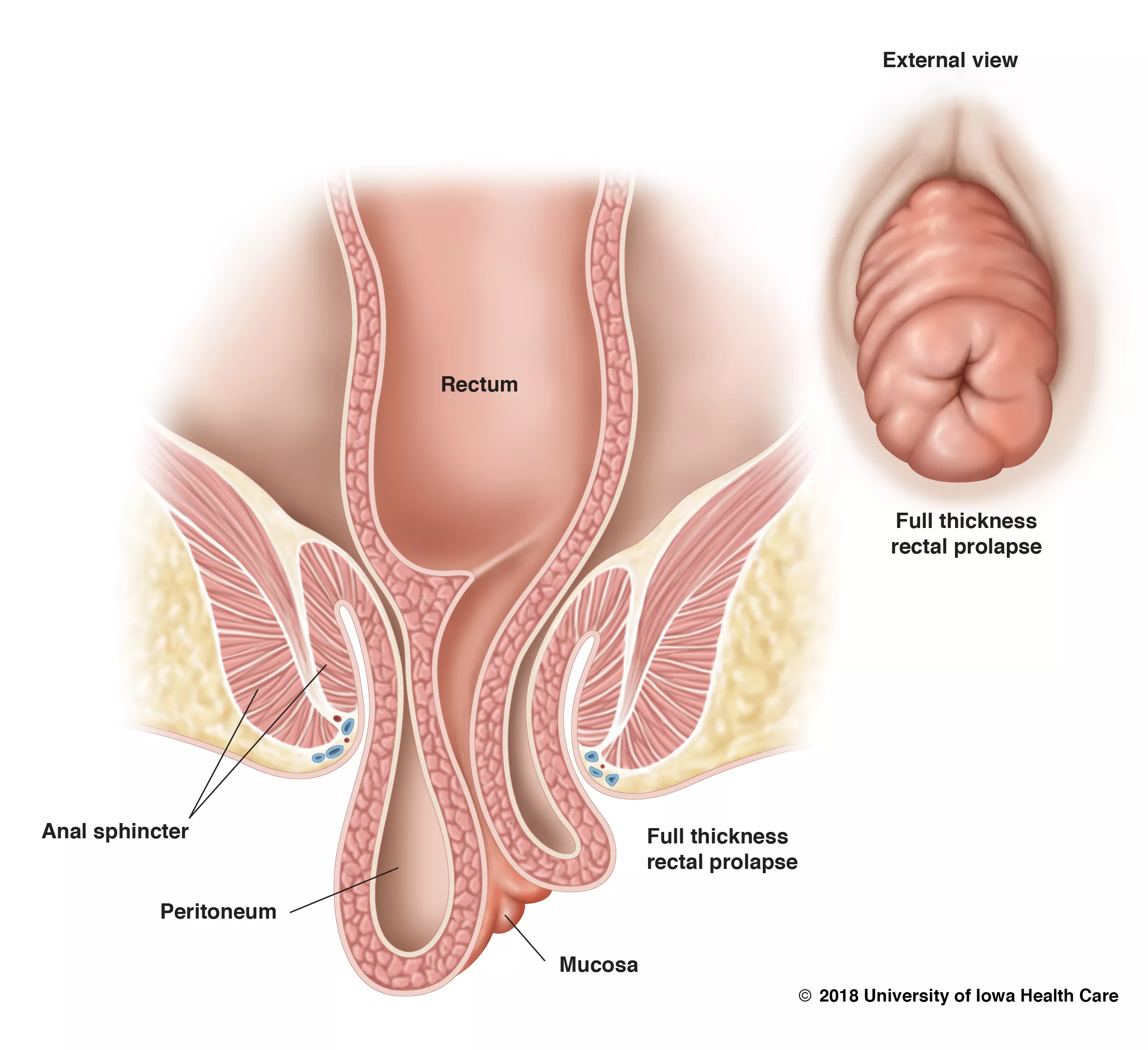Rectal prolapse
What is rectal prolapse?
Rectal prolapse is a condition that occurs when the rectum turns inside out and bulges through the anus. The condition tends to be progressive. At first the rectum may go back in place on its own, but eventually it may need to be repositioned manually. Surgery is necessary to repair the prolapse.
If you think you have rectal prolapse, contact a health care provider.

What causes rectal prolapse?
Many things can cause rectal prolapse. In adults it is most commonly found with constipation or muscle problems in the pelvic/genital area. Rectal prolapse is much more common in women than men.
It can be associated with
- Weak anal muscles (anal sphincter)
- Rectal/anal nerve damage
- Chronic constipation
- Chronic diarrhea
Rectal prolapse may first occur only after bowel movements but overtime it may occur sporadically, spontaneously, and more frequently.
Symptoms
Early rectal prolapse can be confused with prolapse of internal hemorrhoids. Symptoms may include the feeling of a bulge in the anal area. You also may be able to see a reddish-colored mass coming out of the anus.
With rectal prolapse you also may experience
- Anal/rectal pain
- Rectal bleeding
- Fecal incontinence (when stool leaks)
Diagnosis
If your rectal prolapse has not gone back in on its own and you have not pushed it back in, your doctor will be able to see it. If your doctor can’t already see the prolapse they may want to. Often times this can be done by having you strain in a way that mimics a bowel movement. If you have rectal prolapse your doctor may want to perform additional exams to determine the underlying issue.
Treatment
Surgery is needed to repair rectal prolapse. A range of operations can treat the condition, and your doctor will determine which one is best for you. It depends on how severe the prolapse is as well as its cause. In addition to repairing the prolapse your doctor will want to treat any issues that led to the prolapse, such as chronic constipation or chronic diarrhea.